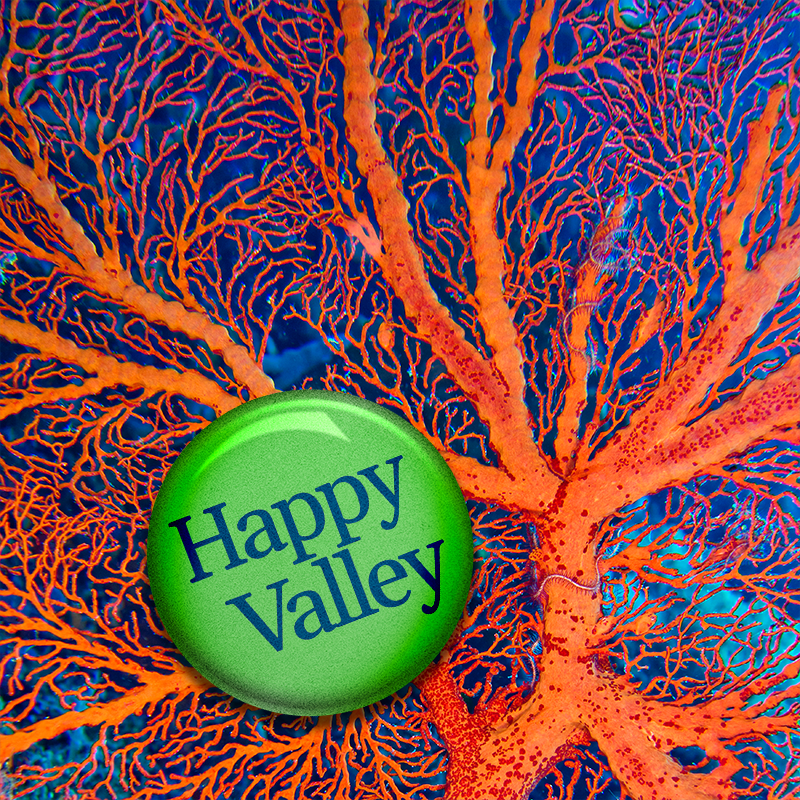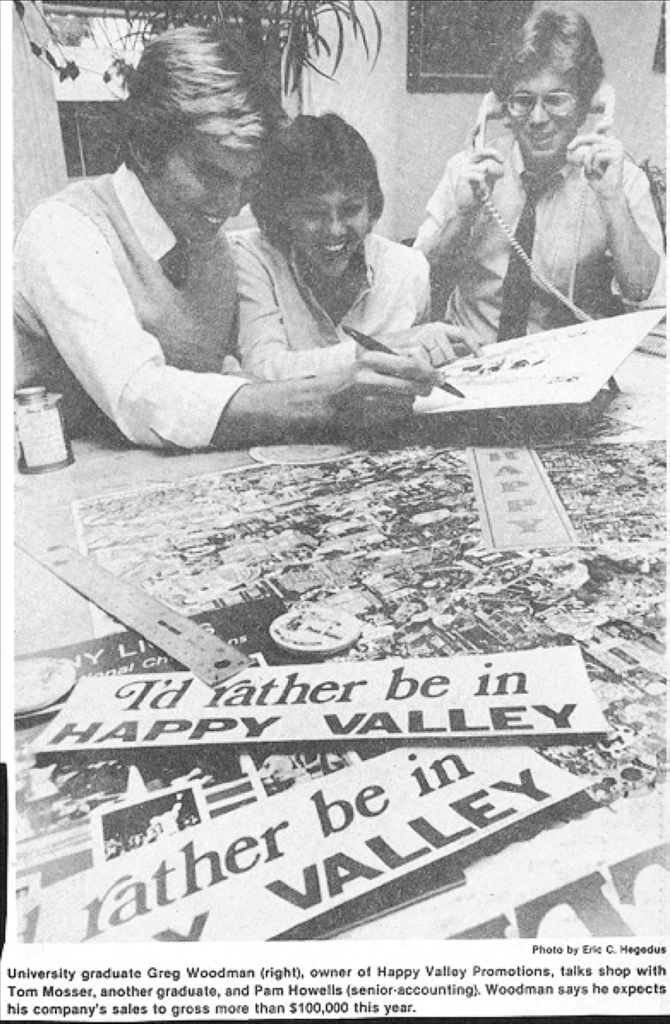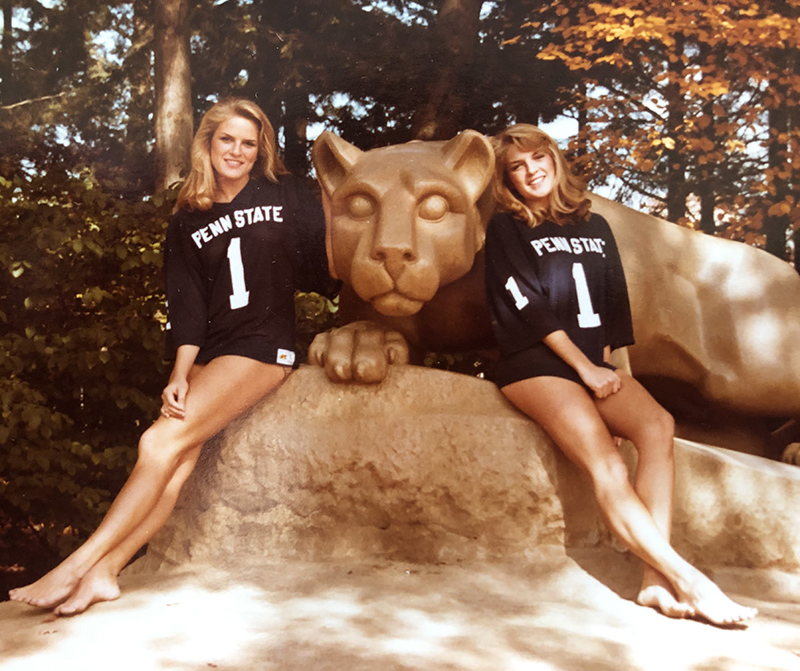By Greg Woodman
In business, leadership, and community development, we spend enormous energy crafting data-driven plans, economic forecasts, and strategic reports. But here’s the truth:
It’s not the data that moves people. It’s the story.
Why?

Because stories change our brains.
When we hear a compelling story, our bodies release a neurochemical cocktail—primarily:
- Oxytocin: the bonding hormone that fosters trust and empathy,
- Dopamine: which sharpens attention and memory, and
- Endorphins: which create joy, creativity, and openness.
This blend doesn’t just make us feel something—it makes us remember and believe. It biologically disarms skepticism and builds connection.
This is the science behind storytelling.
And perhaps the most powerful example of that, right here in Central Pennsylvania, is the name we all know—and increasingly, the world is beginning to recognize:
Happy Valley.
From Humble Beginnings to Regional Movement


In 1981, as a Penn State college student, I named my company Happy Valley Promotions. Our mail order catalog said “we specialize in those feelings and emotions that are unique to the total Penn State experience. At the time, “Happy Valley” wasn’t a brand or a business strategy—it was just a warm, colloquial name Penn Staters used with pride.
I vividly remember when a local motel owner called me to ask:
“Would it be okay if we named our place the Happy Valley Motor Inn?”
My answer was simple:
“Yes—and the more people who do it, the better, and that I did not own the name.”
And that’s exactly what happened.
From businesses and nonprofits to tourism campaigns and now—in 2025—a full-fledged Happy Valley Casino, the name has become more than regional shorthand. It’s become a movement.
The marketplace has spoken.
Happy Valley has won.
The Emotional Science of a Sticky Name
Why does Happy Valley stick while other names like “Centre County,” “State College,” “University Park,” “Centre Region” or even “Central Pennsylvania” do not.
Because those names are geographic labels, not emotional triggers.
They’re accurate—but not imaginative. Logical, but not memorable.
“Happy Valley,” on the other hand, feels like a story.
It evokes warmth, belonging, optimism, and a sense of home. For some, it means football Saturdays. For others, a peaceful place to raise kids or retire. For entrepreneurs, it represents opportunity and quality of life. It’s aspirational without being exclusive—simple, yet emotionally packed.
That’s not just branding. That’s emotional encoding.
What Teaches Us About Place Branding
Across the country, cities and regions are waking up to what we’ve learned here:
People choose places (and products and services) based on how they feel.
That’s why Austin says, ‘Keep Austin Weird,’ Nashville invites you with ‘Music Calls Us Home,’ and Michigan still resonates with ‘Pure Michigan.’ These aren’t facts—they’re emotionally charged narratives that make you feel something. And that’s what sticks.
“Happy Valley” is our oxytocin trigger.
It makes us feel good. It makes us feel at home.
This isn’t just a retrospective—it’s a roadmap. Here’s what we can learn:
1. Story is Strategy
Your list of assets—low crime, great schools, strong infrastructure, great entertainment—is important. But only the story makes those assets emotionally stick.
“After retiring from the Navy, Mark and his wife chose Happy Valley because it reminded them of their childhood hometown. Within six months, they had season women’s volleyball tickets, a CSA membership, and more friends than they’d had in 20 years.”
That’s the kind of story people remember. And share.
2. Branding is Not Naming—It’s Meaning-Making
A name like “University Park” describes.
A name like “Happy Valley” invites you in.
It becomes a mirror, a promise, a shared identity.
3. Repetition Builds Recognition
The best stories are told often, across platforms, by many voices.
Whether you’re a business owner, nonprofit leader, teacher, or elected official—lean into the story. Use the name. Reinforce it with action and experience.
Why This Matters Now
In an era of decentralized attention, economic uncertainty, and fear-driven headlines, it’s easy to default messaging that influences in the short term—but fear doesn’t build trust. And it doesn’t build community.
That takes something else.
It takes stories that release oxytocin, dopamine, and endorphins—stories that connect us, inspire us, and invite us to belong.
Let’s use that kind of storytelling to grow businesses, attract talent, support nonprofits, and reimagine what regional pride looks like in the 21st century.
Let’s move beyond marketing—and into meaning.
Let’s make Happy Valley not just a place on the map, but a feeling the world wants to be part of.
Because after all these years…
The story is just getting started.
What part will you play?
We’ve seen the power of a name. We’ve felt the pull of a story that sticks.
But this isn’t just about the past. It’s about the next chapter—and that chapter is being written right now.
At ConnectHappyValley.com, we’re building more than a website.
We’re creating a platform for you—residents, business owners, alumni, students, nonprofits, artists, and dreamers—to share the stories that make this place come alive.
Because branding a region isn’t a marketing exercise. It’s a collective act of identity.
And every voice matters.
So, here’s the question:
What part of our collective story are you choosing to play?
What story are you ready to tell?
Whether it’s a business journey, a neighborhood tradition, a local hero, or a vision for the future—we’re here to help you share it.


4 Responses
Mark’s story sounds like mine. Grew up in PA, attended PSU (NROTC), spent 20 years in the Navy. Had the option to work in the defense industry but chose a position here in Happy Valley. It has it all: great schools, great sports, great cultural events, great outdoors similar to major metropolitan areas but in small scale. You don’t get lost in the crowds in Happy Valley. There’s never a big event where you don’t see friends.
I’m curious.. If a leader is considering whether to open a massive business in Central PA or Nashville or Pittsburgh or one of many other places, what’s the pitch that the Central PA reps give? How much does story lead the narrative? How does their proposal make the business leader feel?
Don’t answer that, I fear I already know. I fear the proposal is a bunch of numbers and statistics and long narratives about tax breaks and something bragadocious about how many smart people are at Penn State.
And it’s a big reason why, for example, Ohio is kicking our ass when it comes to attracting new business and growing its economy.
Question for this article’s author:
How can Happy Valley reinvent its Economic Development strategy and win the race? If you were in charge or in a position to offer guidance, what tactical changes would you make?
And don’t leave me hanging, sharp author, post a response! 🙂
Hey Ben—great question. Here’s the straight-up answer:
Shout out to all the folks grinding every day to drive smart growth here in Happy Valley. Props to the CBICC crew, Ben Franklin, Penn State and local innovators, ARL visionaries, LaunchBox believers, and everyone else moving the needle. The strategy is there. The work is being done and I am trying to amplify that great work through this platform.
But here’s the hard truth: if no one hears it, none of it matters.
If we don’t tell our story—loudly, proudly, emotionally—it doesn’t exist in the market.
We’ve been whispering and mostly to each other when we should be roaring.
The regional brand identity? Still a line item.
The united and focused marketing plan? Still collecting dust. Or worse, 5 different campaigns happening at once, by all the various orgs competing for attention. Plus we have Penn State cranking out press daily tied political funding issues, trustee fights and budget battles.
The national unified shout? Still not funded—or waiting for a grant.
And hey—my own efforts? Weak, maybe. But you’re here. You’re reading this. You’re challenging me and the region. So, it’s not a total fail.
I’ve been putting my own limited dollars into trying to shine a light. Amplifying what I love about this place. Still believing in the potential. Even changed the site name to Connect Happy Valley—because yeah, maybe even I started leaning toward tourism and lifestyle. It’s easier. It sells. And maybe, just maybe, deep down, we’re not sure we really want growth here. Stay small is the vibe I get daily.
Meanwhile, Ohio’s out here branding its belief in the future.
They’re loud. They’re aligned. And they’re winning.
And we’ve got 10X the story—they just tell theirs like it matters.
I helped build Airwalk on rebellion, creativity, and emotional connection. We didn’t wait for approval. We shouted from the shadows of Altoona (and worked out of strip mall) and made skate shoes a global vibe. I had the greenlight—and the $30 million—to make our brand part of every teenager’s identity. And that came from a 70-year-old legend named George Yohn. Total badass. Rest in peace, George. You gave me the chance to shout it.
Now Centre County’s got a story that’s even deeper. Bigger. More real.
So, if I’m at the helm?
We make story the spearhead—not the side dish.
We fund it like football, and lead with soul, not spreadsheets.
We build a digital-first, heart-forward campaign that makes CEOs, founders, and families feel why this is the place where the next economy takes root.
The collective strategic plan of the region is good and our potential is vast. The people are in place.
Now, we’ve got to invest in the voice.
Let’s stop asking “why not us?”
Let’s start hearing people say, “why didn’t we move there sooner?”
– Greg Woodman
Brand Builder | Still Loud | Still Believing | Still Trying to Promote the Greatest Place on Earth to Live, Work, and Play
Greg, Your article was proof you see the problem (a good start). Your response proves you see a path to solving it (priceless). Stories as the main course, spreadsheets as the side dish. You nailed it. It’s also a formula so anti-MBA, anti-comfort zone, anti-status quo that it will not happen without someone with a lotta courage driving the approach, and that means you!
Thank you for the thoughtful response. If anyone read newspapers any more your article and response would deserve a full page front story. When you’re ready to run for governor I’m ready to lead your campaign.